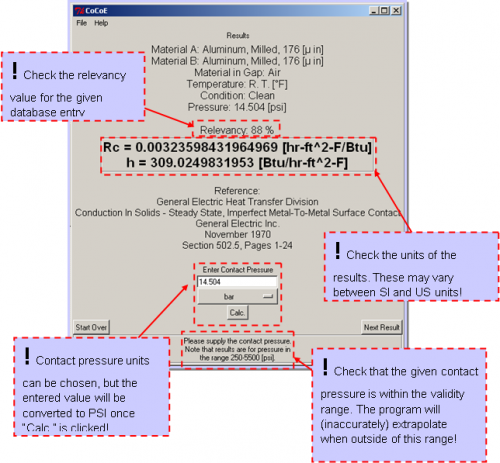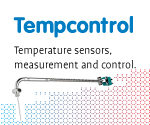Thermal contact conduction
An important kind of heat transfer is thermal contact conduction, in which heat is transferred over a mechanical contact between two objects. This “contact conduction” is normally considered as a combination of the three fundamental modes of heat transfer (see figure below):
- Conduction occurs at locations where microscopic surface asperities of the two solids touch. However, the total area where contact is made is much lower than the macroscopic surface area. (blue arrows)
- Convection or conduction can occur through the interstitial medium, filling the gaps between the touching areas. If the objects are in a vacuum, this mode of heat transfer does not occur, of course. In many cases, this heat transfer will actually consist mainly of thermal conduction, and not so much convection, due to the small distances involved. (green arrows)
- Heat is transferred via radiation from one surface to the other. (red arrows) This method is usually only significant if there is a very effective small contact area (low conduction) and no interstitial medium (low convection).

The total thermal contact conductance [W/(m2K)] depends on many factors, and is very difficult to determine. Primarily these factors affect the effective contact area, which result in different combinations of heat transfer modes. Examples are:
- Surface roughness
- Hardness of contacting materials
- Contact pressure
- Material in gap (air, water, oil, glue, etc…)
Here are some examples of thermal contact estimations:
- A commonly used value for a sturdy mechanical interface is around 1000 W/m2K. This would be typical of a dry contact, with a moderate contacting pressure (e.g. a bolted connection).
- A loose, sliding fitting with very little contact pressure would have a thermal contact conductance determined by convection/conduction through the interstitial medium (such as air), or by radiation between surfaces. Either of these effects can be calculated with previously given formulas.
- When the gap is filled with a known material (e.g., glue), you can calculate thermal contact as conduction through the material is dominant. In that case, the 1D Fourier conduction law through the medium helps determine the effective contact conductance.
Thermal contact conductance calculator
A thermal contact conductance calculator exists which looks up experimentally determined values for similar situations in a database. Take care when using this tool, and make sure the values given are relevant! It can be found here:
Contact Conductance Estimator (CoCoE)
Below is a screenshot of a thermal contact conductance calculator result. Pay attention to units, they vary depending on the database entry. Also make sure the pressure requested is within the range of valid values, listed at the bottom of the screen. Note that no warning is given when outside this range (as in the screenshot), and that the program will happily extrapolate far outside the valid range, as extrapolated values are not reliable!

